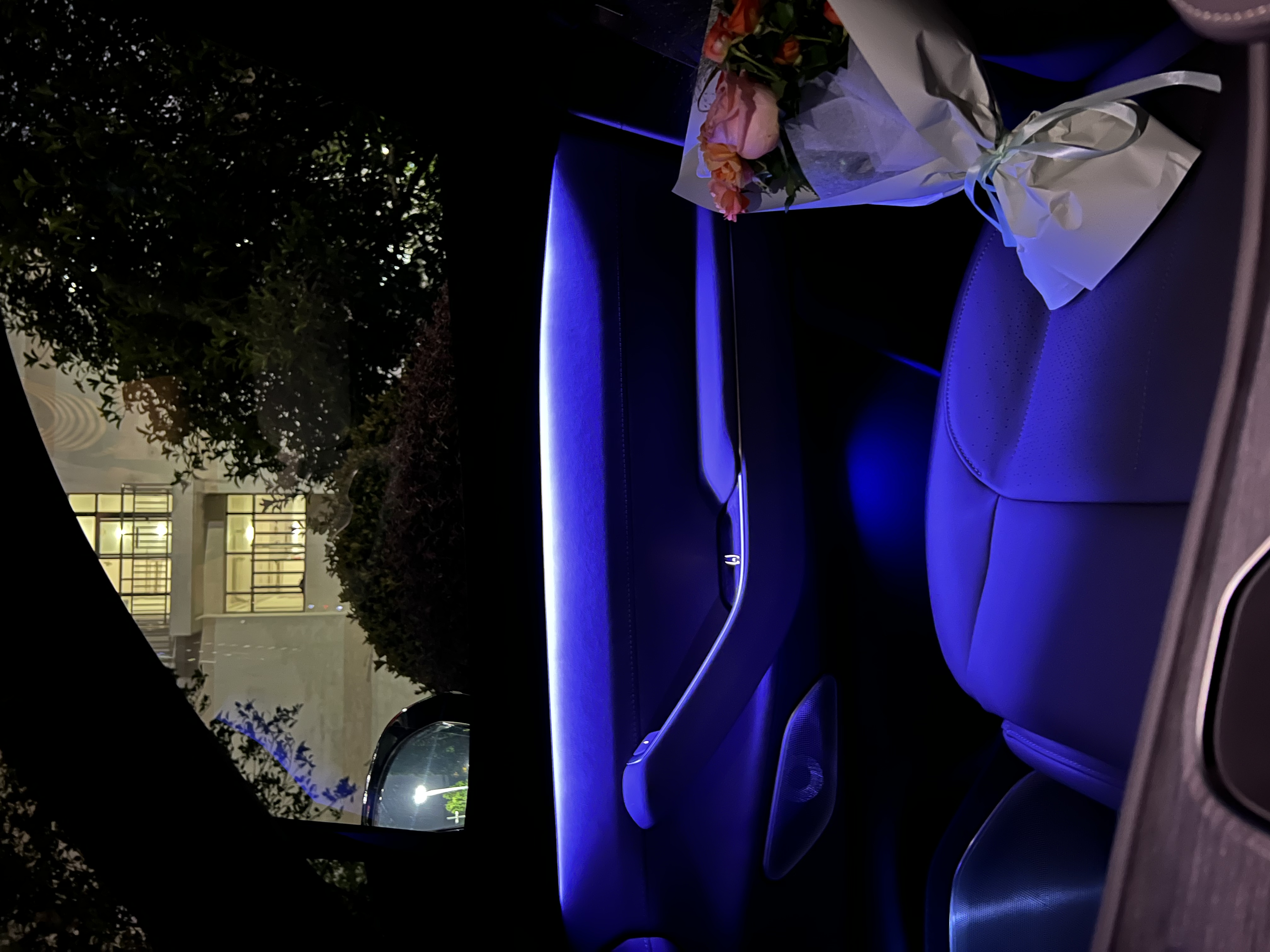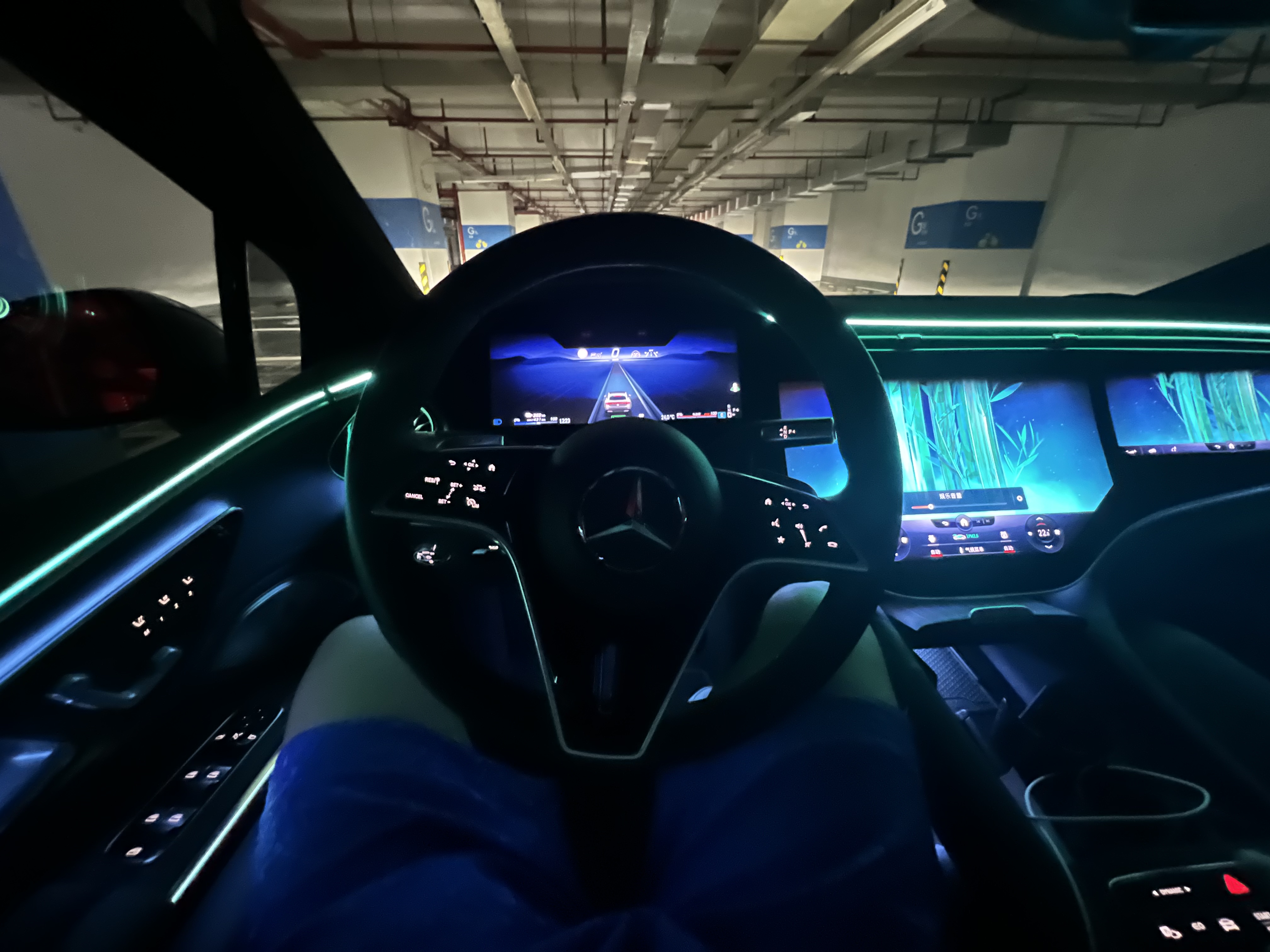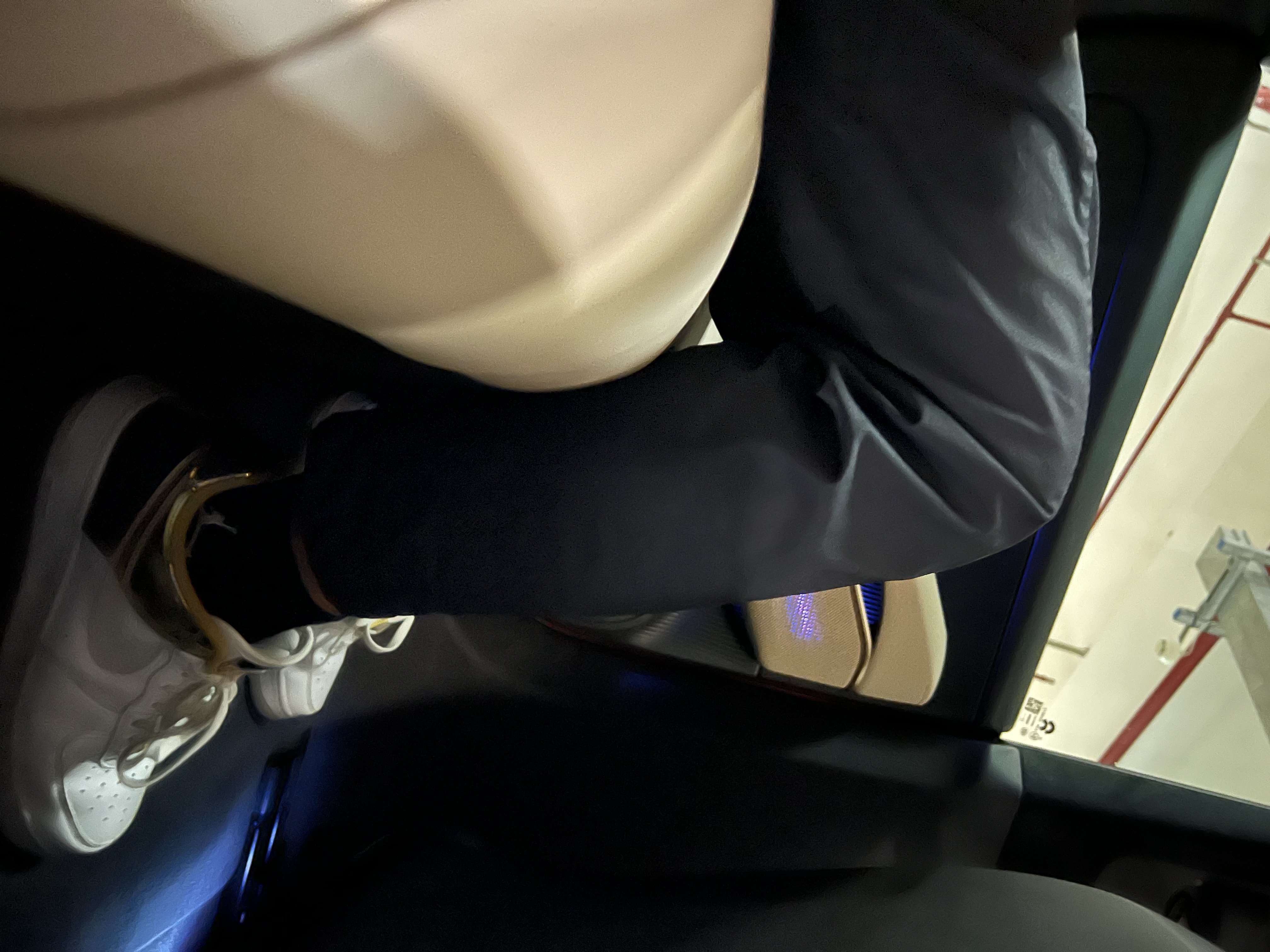- Briefing:
As of the time of writing, it has been exactly 60 days since the car was picked up, and the total distance driven is 1966 km. Since it is my father’s car, I am just a “tool man” who picked it up for him. I drove the new car for about a month before taking it back to my hometown during the National Day holiday. This can also be considered a deep experience with ES7. In this sharing, I will also summarize my feelings and family feedback (I also just test drove ET5 recently and will make a comparison). Although I am a loyal fan of NIO in front of my friends, I still try my best to be objective and fair when sharing my experience with my family. If you have the same feeling as I do, I hope you will “like, comment, and share” this post.


Below, enjoy!
- Appearance: 🌟🌟🌟🌟
(1 star to 5 stars)
As for the appearance and interior of ES7, I have already discussed it in detail in my “car picking notes” before (interested readers can check it on my homepage). The NT2.0 family design language is still there, and the front face is still easily recognizable. However, the lack of the stunning feeling of the 866 car model’s tail in the current trend of through-type taillights deducts 1 star here, making the ES7 appear restrained and atmospheric, but not too assertive. This may be more popular among users who are slightly older. Recently, I saw that IM L7 launched an SP performance version, and even the NIO ES6 has a performance version. I wonder when NIO will launch an ES7 performance version. Such a good foundation should not be wasted (heavily hinting at EC7hhhh).

- Cabin: 🌟🌟🌟🌟🌟
The interior of the ES7 truly embodies NIO’s concept of a “second living room”, as soon as you get in the car, you can clearly feel “yes, this is NIO’s design style”. It doesn’t deliberately create luxury, but shows luxury in every detail. This is the power of design. Unlike a certain “K” brand, I admit that its materials are sufficient, but it always gives me a feeling of too much force in design, unnatural. The use of renewable rattan wood materials, matte chrome edging treatment, and the use of light waterfall-style ambient lighting on the center console are the finishing touches on creating an interior atmosphere. I didn’t choose Nappa leather seats, so later I discovered that the Nappa leather seats used more suede material on both sides than the Haptex leather seats, further enhancing the sense of luxury. The money spent on this optional equipment is definitely worth it.



 The adjustment switch for the ES7 and ET7 car windows is made of metal, which feels very high-quality. The ET5, on the other hand, uses plastic, which lacks the same quality. The driver’s seat’s roller-style leg support adjustment deserves a big thumbs up. This design ensures that the roller’s center stays below the knee, providing maximum adherence. Unlike some cars with segmented leg support adjustments, I no longer have to worry about embarrassing situations like dropping fries from KFC in the car’s seams.
The adjustment switch for the ES7 and ET7 car windows is made of metal, which feels very high-quality. The ET5, on the other hand, uses plastic, which lacks the same quality. The driver’s seat’s roller-style leg support adjustment deserves a big thumbs up. This design ensures that the roller’s center stays below the knee, providing maximum adherence. Unlike some cars with segmented leg support adjustments, I no longer have to worry about embarrassing situations like dropping fries from KFC in the car’s seams.
I give the ES7 cockpit a five-star rating, primarily because of NIO’s sense of design. However, this isn’t to say that there isn’t room for criticism and improvement. Recently, I had the chance to test drive Mercedes-Benz’s EQS at the 42 Garage. Upon sitting in it, it was obvious that the brand’s design elements were present. However, traditional automakers are clearly more sophisticated in creating a luxurious atmosphere by using high-quality materials in visible and touchable places. Although some may argue that this is a matter of price range, I think that if NIO were to learn from traditional automakers’ handling techniques in more detailed or specific parts of design, we as consumers would undoubtedly benefit from their efforts. For example, the previously mentioned design flaw in the rear seat belt outlet connection is obviously the result of the designer’s lack of experience. Although the door handle button is intelligent, it still lacks a certain level of quality. This frequently used area is, ironically, the most apparent place to notice such shortcomings.








Also, there is a very detailed point. Even though NIO has used suede to cover the B-pillar seat belt position, every time I release the seat belt buckle and it snaps back and hits the side of the B-pillar, the plastic feeling is very strong and the “duang” sound is very cheap. In addition, the NVH of ES7 is very good, so the sound is quite obvious. As far as I remember, if I’m not mistaken, Avita11 used soft cover materials to handle this area. Therefore, NIO still has a lot of work to do in these details.

- Driving Experience: 🌟🌟🌟🌟🌟Actually, when I test drove the ES7 for the first time, it made me really appreciate the chassis quality of the NT2.0 platform. The greatest sensation I felt was that the chassis became more “resilient” than before. This “resilient” feeling, compared with Tesla’s suspension which is “hard”, incorporates both comfort and gives me confidence to step on the accelerator in sport mode. Though it cannot be said that the car and driver are perfectly synced, the car no longer feels loose between its body and chassis, and the feedback of the body and chassis remains coordinated in various road conditions. The other day when I test drove the ET5, I also drove the EC6 on the side, which further confirmed my judgment.
I still remember very vividly one time when I drove the ES7, going over a small slope in sport mode. I wanted to pursue some excitement, so I stepped hard on the accelerator. The tires screeched (equipped with standard 20-inch Michelin EcoContact 6 tires, the grip performance is indeed insufficient), but after going over the steep slope, the chassis quickly held onto the car’s body firmly. There was barely any vibration from the front axle of the car, and after a momentary jolt from the rear axle, the vibration was quickly suppressed. It really astonished and pleased me. The ES7 with air suspension is even better than the ET5 in terms of driving experience. When going over large bumps in comfort mode, the oscillation is eliminated smoothly without any extra shaking. Small bumps are also filtered out effectively, though not completely; the feedback from the rear is processed and not annoying.
However, thanks to its sedan body style, the ET5 naturally has advantages in handling. The sensation when accelerating from 0 to 100 km/h is stronger than that of the ES7. To be honest, the ET5’s front view is really good, and in combination with a steering wheel that has a few adjustable gears and not too much free space, the body of the car is very agile. Driving it would be very easy for a woman. Overall, the driving quality of the ES7 is no longer NIO’s Achilles heel; in fact, it is quite commendable. This also makes me look forward to what kind of surprise the upcoming OTA tuning and upgrades from NIO will bring.



- Intelligence:🌟🌟🌟
The ES7 car with the 8155 chip runs smoothly and is very easy to use. Since receiving the car, I have not once encountered a situation where the car’s system has crashed or encountered a severe bug that affects usability. As the “soul” of NIO, Nomi, I was actually full of expectations for it, but it still cannot meet my expectations. I have used XPeng’s “XiaoP”, and personally feel that it is already the ceiling of domestic car companies’ voice interaction technology. In terms of recognition, fluency, and response time, it is no longer just “usable”, but “good” and “easy to use”. Especially since XPeng has high control authority over the car, it really is “what you say is what you get.” The interaction experience of “Ideal Classmate” on L9 has also caught up with XPeng’s XiaoP and can compete with it. However, Nomi seems to be a shy and reserved girl, who always thinks carefully before speaking. Although the delay time is not long, when I wait for her response, all my senses are amplified. Sometimes I can’t wait and want to take the initiative, but she “resists and welcomes.” This experience is really both love and hate. I hope that NIO can catch up with its competitors as soon as possible.## English Version
In terms of assisted driving, NIO has already equipped its hardware with stable basic ACC and LCC functions that can be used upon delivery. With real-time rendering and feedback of visual information from laser radar, which reduces driving fatigue greatly, my confidence in initiating assisted driving has been enhanced, especially when driving on enclosed roads and in traffic jams. However, standing at the end of 2022, while various automakers are competing in terms of assisted driving hardware and experience, even cars with a price tag of a few hundred thousand yuan can now be equipped with L2+ level assisted driving functions. Therefore, it’s time for NIO to consolidate its industry position with its latest strength. Hopefully, they won’t postpone the release of their 2.0 platform leading the assisted driving system in the fourth quarter any longer.

Apart from the flashy features like assisted driving and in-car systems, there is one aspect of the daily operation experience that I feel does not match NIO’s luxury positioning. That is the “foot-kicking function” of the electric tailgate, which is not sensitive enough. I have this feeling when I use it, and my mother also gives feedback that it fails eight out of ten times when used. Even if the key is carried and you “kick” or “sweep” it under the badge of the car, the tailgate often fails to open, which is embarrassing when carrying items in hand and greatly impacts the user experience. I don’t know if it’s an issue with my car or a common problem. Do any other car owners feel the same?
- Range: 🌟🌟🌟🌟
I mostly drive on urban roads. With a 75% battery charge, I can drive about 370-380 kilometers, about a 20-30% discount. If I drive faster, I can still have an actual range of about 350 kilometers.

However, what’s most important is that my home is in the “electric zone”, where there is an official battery swapping station and supercharging station within a radius of less than 1 kilometer. Car owners who have had similar experiences will understand what it’s like. 🤫
- At the end:
After rambling on about my various experiences with ES7, it actually all stems from my deep love for the NIO brand. It’s already late at night and to finish off, I’d like to cite @明明 from “42 Garage” and his emotional evaluation of ES7. His feelings have deeply resonated with me 👏🏻👏🏻👏🏻
One day, after the test was over, I was driving home in my ES7. It was almost 9 pm. I turned on NIO PILOT, turned on the seat massage, and turned on “NIO Immersive Sound.” I gently selected the classical music album “In the Name of Love,” which is my favorite playlist these days, created in collaboration with NIO and the China Philharmonic Orchestra.
Outside the car window was the north Chai elevated road, with the gradually thinning traffic flow and warm-colored street lights passing by. Inside the car window was the 7.1.4-channel surround sound, and I felt like I was in a theater. Vivaldi’s violin concerto “Spring” poured out, with the birds chirping, violin jumping notes, fast slurs and tremolos, and the intermittent plucking of a harpsichord, as if a spring wind blowing by and gurgling streams.
I could distinguish every jump and slur, tremor and resonance of the violin, and even perceive the sound of the player’s slight breathing coming from the front right.
At that moment, I suddenly felt a bit sentimental. I was touched by the incomparable product strength of ES7, and even more impressed by NIO’s efforts in shaping the brand value. The so-called “sense of enjoyment” has been concretely expressed at this moment.”
This article is a translation by ChatGPT of a Chinese report from 42HOW. If you have any questions about it, please email bd@42how.com.
